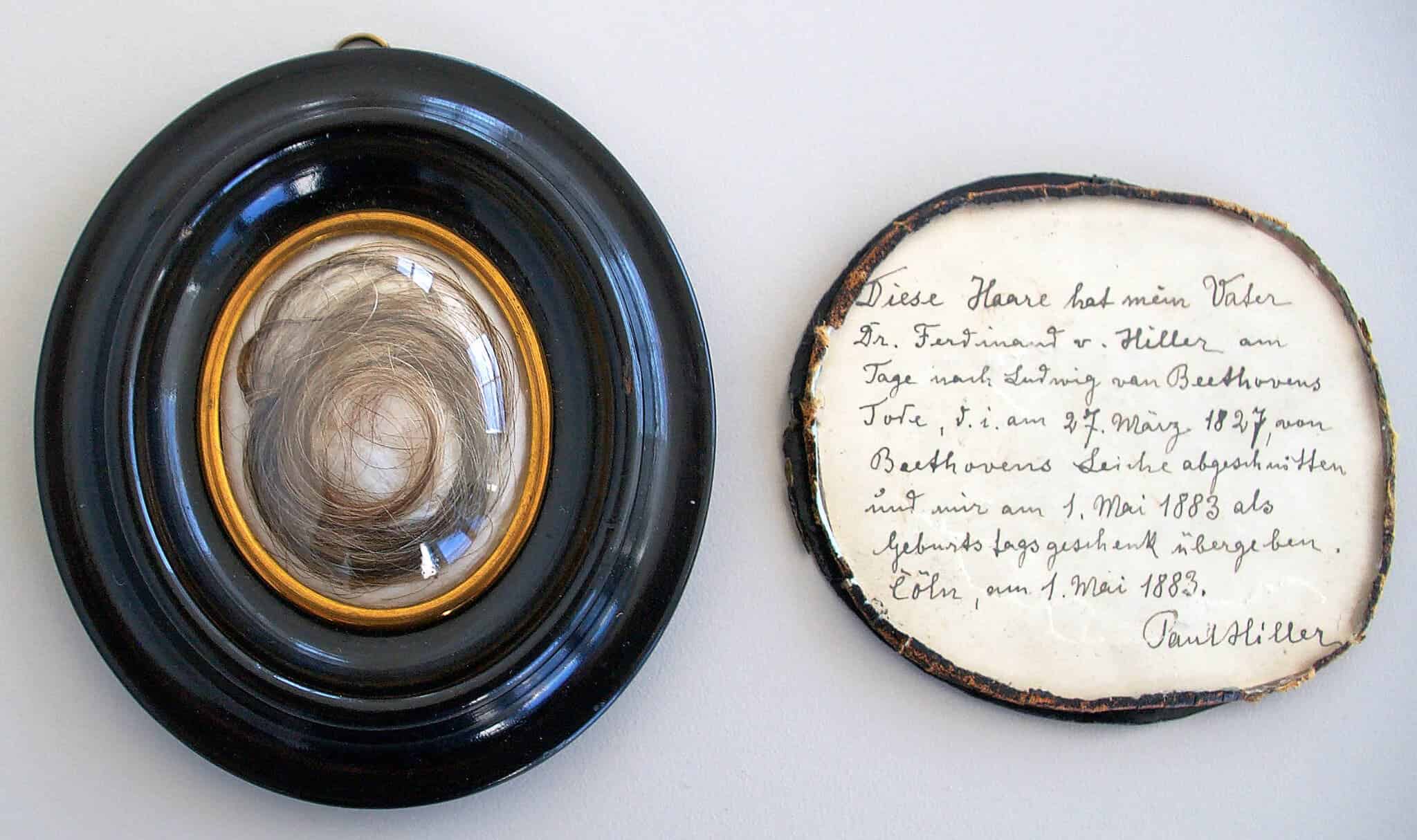
In March 1827, Ludwig van Beethoven was on his deathbed. His final days were marked by intense abdominal pain and jaundice, drawing a stream of mourners. Among them, some sought a peculiar keepsake: a lock of his hair. In the aftermath of his death at 56, a rather gruesome craniotomy was conducted, but it failed to reveal the cause of his deafness, a disability that had baffled many. The mystery of Beethoven’s health has been a subject of intrigue for nearly two centuries.
More recently, a major twist emerged in this historical puzzle. A comprehensive DNA analysis conducted by an international team of researchers challenges longstanding beliefs about Beethoven’s health, his death, and even his lineage. Notably, a famously documented lock of Beethoven’s hair, celebrated in literature and film, was proven not to be his, but rather from an Ashkenazi Jewish woman.
You may have heard about the theory that Beethoven suffered from lead poisoning, but this too was dismissed by the genetic analysis Moreover, the research disassociated Beethoven genetically from a Flemish family in Belgium, who had long claimed kinship.
A DNA Detective Story
The journey to these discoveries began in 1994 when a lock, alleged to be Beethoven’s, was auctioned for $7,300 and displayed at the Ira F. Brilliant Center for Beethoven Studies in California. Allegedly, the hair was clipped by Ferdinand Hiller, a 15-year-old composer and ardent fan on the day after Beethoven died.
Over the generations, the lock — which came to be known as the “Hiller strand” — was passed down in the family until the day of the fateful auction. This story proved so enchanting that it gained a lot of attention and became the subject of a best-selling book by Russell Martin called Beethoven’s Hair (2000). Scientists who gained access to samples of hair later found lead levels exceeding the normal amount by 100 times, which led them to believe the iconic composer must have died of poisoning.
But despite its appeal, not everyone bought this romanticized story. Doubts about the lock’s authenticity led William Meredith, a Beethoven scholar, and his team to acquire additional hair samples linked to the composer. They ended up with eight, including the sample from Hiller, which geneticist Tristan Begg used to sequence the DNA.
This is how they learned that the Hiller lock turned out to be from a woman. In the process, the whole lead poisoning theory was thrown out the window.
It seemed like everyone was back to square one. However, the subsequent analysis of seven other hair samples revealed five with identical DNA. Since some of the hair samples had very credible histories traced back to Beethoven, the researchers were confident they finally had genuine Beethoven DNA at their disposal.

Deciphering Beethoven’s DNA
The genetic analysis revealed several previously unknown things about the great composer’s life. A 2006 study that looked at Beethoven’s centuries-old autopsy data concluded he had “cirrhosis of the liver, and probably also renal papillary necrosis, pancreatitis and possibly diabetes mellitus”.
Previously, some have suggested that Beethoven must have been a heavy drinker based on such assessments. But his DNA tells a different story. Beethoven’s genome shows he was predisposed to liver disease. Additionally, traces of hepatitis B were found in his hair, suggesting a childhood infection.
“If you have hepatitis B today, then your doctor is going to tell you not to drink a single glass of wine,” says William Meredith, founding director of the Beethoven Center at San José State University and a co-author of the study.
It’s likely Beethoven succumbed to cirrhosis — but there’s no evidence to suggest he was an alcoholic. A combination of moderate drinking and unfortunate genetic factors probably resulted in his fatal illness.
Intriguingly, the study revealed a disparity between Beethoven’s genetic makeup and that of his supposed family line. There’s a family in Belgium, aptly called ‘van Beethoven’, who claim to descend from the same lineage. Archival records that date from as far back as the 16th century back them up. But Beethoven’s Y chromosome differed from that of the van Beethoven lineage in Belgium, hinting at a potential extramarital event in his ancestry — exactly which family member strayed is still a mystery.
So not only did this study demystify aspects of Beethoven’s health but also illuminated his genetic background, challenging many preconceived notions. As the curtain lifts on these long-held mysteries, we gain a deeper understanding of the man behind the music, a testament to the power of modern science in shedding light on the shadows of history.
The findings appeared in the journal Current Biology.


